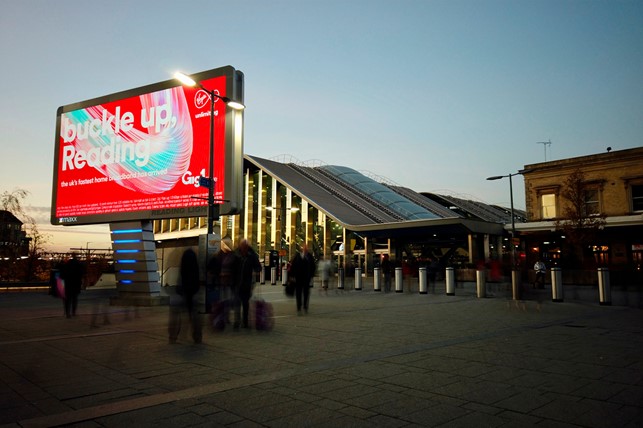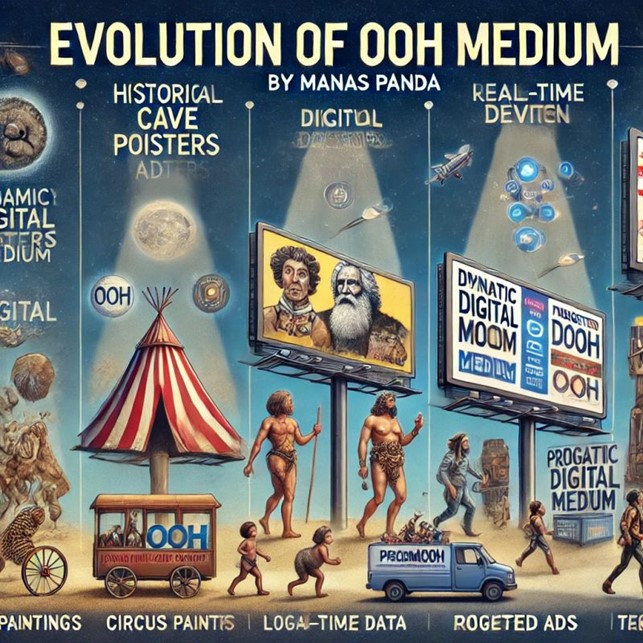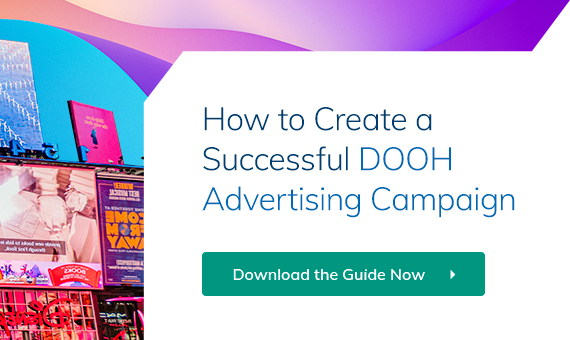With its dynamic content capabilities, ability to create engaging, immersive experiences, and capacity for launching targeted campaigns with measurable impact, programmatic out-of-home advertising empowers brands to make an impactful and lasting impression on their target audiences.
The trend in out-of-home advertising is increasingly digital – and now tending towards the programmatic.
PwC forecasts that programmatic will surpass classic out of home (OOH) advertising by 2030. Dentsu Global analysts estimate that an overwhelming majority (79.0%) of ad spend will be algorithm-driven as early as 2027, and that programmatic optimization drove $33 billion of DOOH media dollars in 2024 – a figure that’s expected to reach $752.8 billion within the forecast period.
So, what makes programmatic out of home advertising such a winning prospect? Read on, to find out.
What Is Programmatic Out-Of-Home Advertising?
Programmatic out-of-home advertising is the automated buying and selling of out-of-home advertising space. In essence, buyers set the terms for which they want to buy media, and when those terms are met, ads are purchased automatically. To this end, a typical programmatic DOOH or pDOOH platform consists of three principal components – a demand side platform (DSP), a supply-side platform (SSP), and an ad exchange.
A demand-side platform is an automated system that allows ad buyers to purchase DOOH ads remotely. This occurs without any negotiation with middlemen, agencies, or media owners. Buyers simply log in to the system, upload their creative, select display screens and criteria for their DOOH ad, and click to get started. The DSP will then automatically buy and deliver inventory in real-time.
A supply-side platform provides a way for media owners (the companies that own digital billboards, transit displays or other DOOH screens) to make their inventory available for advertisers to purchase. Media owners list their available ad slots and set minimum bid prices using the SSP system.
Connecting these two sets of stakeholders is the Ad Exchange – a digital marketplace that facilitates buying and selling between advertisers and media owners. The ad exchange provides tools for real-time bidding (RTB), where DSPs can submit bids based on audience data, location, and impression metrics. Once a winning bid emerges, the ad exchange seamlessly delivers the advertiser’s creative assets to the display.
The Benefits of Programmatic Out-Of-Home Advertising for Agencies
For agencies, the adoption of programmatic out of home advertising offers several advantages.
Using the power of data analytics, artificial intelligence (AI) and machine learning (ML), programmatic platforms give advertisers data-driven insights which enable them to pinpoint specific audiences and locations, and to deliver more relevant messages to target audiences.
By employing digital technology and automated buying processes, programmatic DOOH systems make it possible for agencies to launch campaigns for their clients within minutes, rather than the weeks it might otherwise take for a traditional out of home campaign.
Real-time data analysis empowers agencies and marketers to create customized and contextual messaging which resonates more deeply with target audiences. For example, a programmatic out-of-home advertising platform will typically enable advertisers to adjust their messaging based on time of day, location, weather conditions, and even current events.
Using programmatic DOOH technologies, agencies and marketers can also adjust and optimize their campaigns in real-time based on performance, availability, and market conditions. This allows agencies to take advantage of dynamic pricing, enhanced bidding strategies, and adjustments to optimize budget and return on investment (ROI). Advertisers can also scale up, pause, or stop campaigns in response to market fluctuations or unexpected events.
Finally, by offering a centralized hub for managing multiple ad inventory sources and formats, programmatic out-of-home advertising platforms empower agencies to streamline their workflows and save time. Programmatic automation also reduces the risk of human error.
Leveraging the Power of Programmatic Out-Of-Home Advertising

[Image source: Beeyond Media]
Agencies may adopt a multi-part strategy to leverage programmatic out-of-home advertising technology:
- Use geofencing and location-based targeting technologies and data to target ads based on the viewer’s location, triggering ads when consumers are within a specific area.
- Use first- and third-party consumer data to target specific demographics, interests, and behaviors. This helps ensure that only the most relevant audience segments see each ad.
- Create flexible ad templates which you can update with dynamic data. Use contextual and environmental factors like weather, time of day, traffic conditions, and real-time events to dynamically adjust ads.
- Capture mobile device IDs in the vicinity of a DOOH ad, to retarget users with follow-up digital ads on mobile and social media platforms.
- Buy multiple slots within a single loop or from multiple locations to maximize reach and visibility for the brand.
- Integrate DOOH campaigns with other digital channels to develop a holistic and omnichannel marketing strategy.
- Use performance data to adjust bids, budget allocations, and creative variations in real-time.
The Future of Programmatic Out-Of-Home Advertising

[Image source: LinkedIn]
A number of trends are already emerging to shape the future of programmatic Out-Of-Home advertising.
- With the deprecation of third-party cookies, media owners are now in a position to invest in data and capitalize on omnichannel budgets. Rather than relying on cookies, DOOH can use latitude and longitude data to target audiences. This is making data-rich programmatic platforms an increasingly attractive option for media buyers who need reliable data sources.
- Dynamic Content Optimization or Dynamic Creative Optimization (DCO) is gaining ascendance, as advertisers seek access to dynamic messaging that can change in real-time to reflect consumer behavior, mindset, or stage in the customer journey.
- As climate change and environmental concerns feature more prominently in the public consciousness, sustainability in advertising is becoming an asset that can earmark brands as responsible corporate citizens. DOOH ad inventory that incorporates renewable energy sources, recyclable materials, and low output displays is proliferating as a result.
- Finally, AI and ML are transforming DOOH by analyzing data to predict optimal ad times and locations. Artificial intelligence optimizes content in real-time for relevance and engagement, while machine learning improves targeting accuracy, enhancing campaign efficiency and effectiveness.
Power Up Your Programmatic DOOH Campaigns with The Neuron
To keep pace with these emerging trends and to enjoy their benefits, agencies require a programmatic partner that’s in tune with the times.
Specializing exclusively in pDOOH, The Neuron is an independent DSP with unmatched SSP access. The platform offers a unique bidding technology which utilizes a smarter, more dynamic algorithm to deliver higher-impact ad placements at lower costs for clients. Agencies and marketers can automatically activate campaigns based on user actions, time, weather, inventory changes, or trends for timely, relevant ads.
To unlock the power of The Neuron for your programmatic Out-Of-Home advertising, visit our website.


